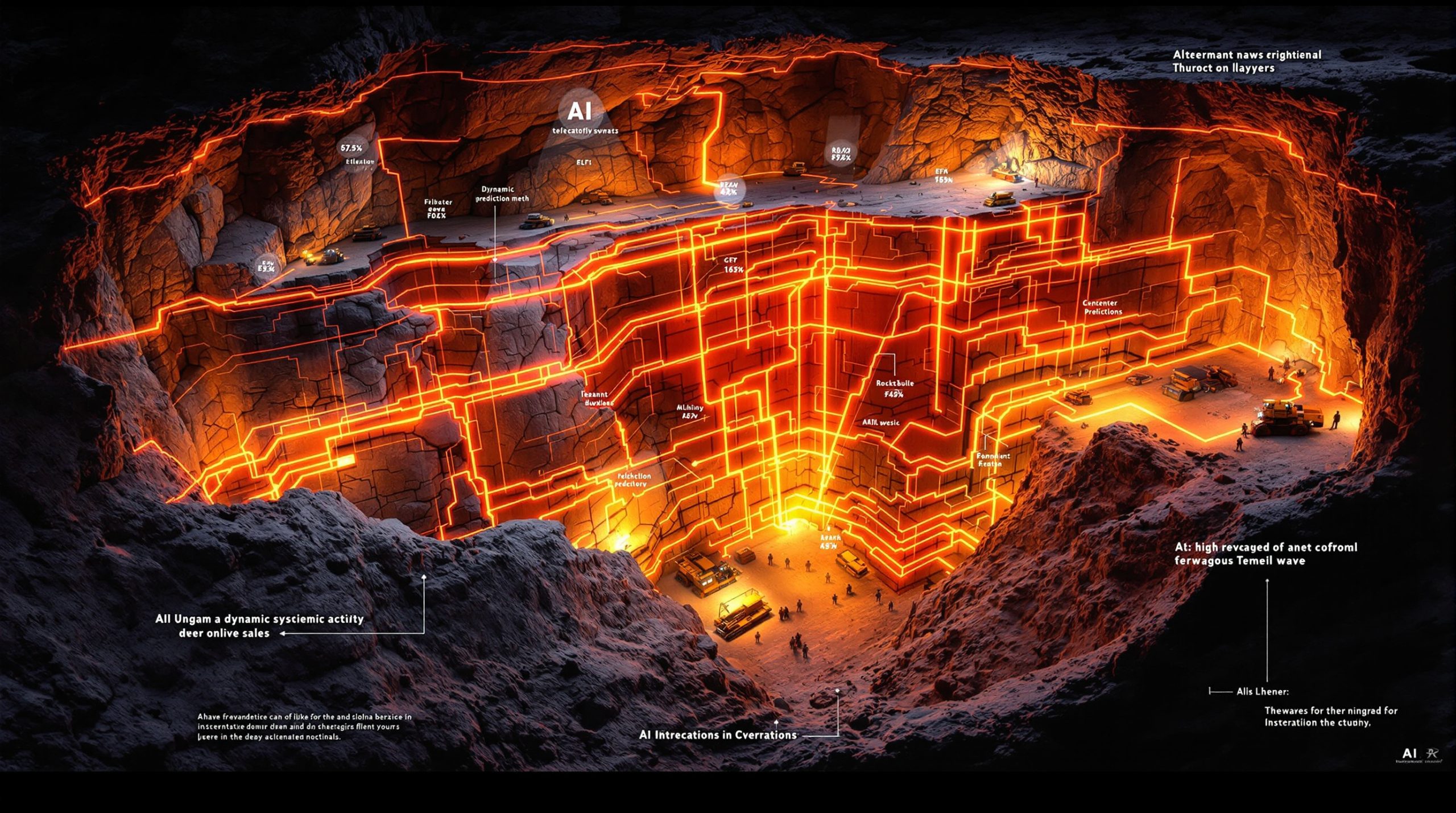The Kalgoorlie Gold Rush: Market Trends and Investment Opportunities in 2025
The resurgence of Kalgoorlie's gold market has captured investor attention across Australia and beyond, with unprecedented price levels creating exceptional opportunities in this historic mining region. As global economic uncertainties continue to influence investment flows, Kalgoorlie's gold sector stands at the forefront of a significant market shift that's reshaping the Australian resources landscape.
What's Driving the Gold Market Resurgence in Kalgoorlie?
Record-Breaking Gold Prices
The gold market in Kalgoorlie is experiencing an extraordinary renaissance, with prices soaring to unprecedented heights. Currently trading above A$5,200 per ounce, gold has witnessed a remarkable increase from approximately A$3,700 just a year ago—representing a gain of over 40% in twelve months.
This dramatic price surge has created exceptional profit margins for local producers, transforming the economics of both established operations and development projects throughout the region. Operations that were marginally profitable at previous price levels now generate substantial cash flows, enabling increased exploration and development activities.
The valuation impact across the gold mining sector has been equally impressive, with market capitalizations expanding rapidly as investors recalibrate their expectations based on these higher price levels. This revaluation is particularly evident among producers with established operations in the Kalgoorlie region, where infrastructure advantages and geological understanding offer immediate leverage to rising prices.
From a historical perspective, while gold has experienced significant bull markets previously, the current price levels in Australian dollar terms represent all-time high gold analysis that few analysts anticipated reaching this quickly. The sustainability of these prices remains a subject of debate among industry experts, though many point to persistent underlying fundamentals supporting continued strength.
"Gold is back, not just in the price charts, but in boardroom strategies," noted one executive during the recent Diggers & Dealers forum, highlighting how the metal's resurgence has become a central focus for corporate planning throughout the sector.
Economic Uncertainty as a Catalyst
Global market volatility has emerged as a primary driver behind the increasing flow of investment capital into safe-haven assets like gold. Geopolitical tensions, trade disputes, and concerns about sustainable economic growth have all contributed to this uncertainty.
The implementation of Trump tariffs has created ripple effects throughout international markets, with economists projecting an estimated 0.3% drag on Australian GDP. This economic headwind has paradoxically strengthened gold's appeal as investors seek protection against potential downside scenarios.
Interest rate dynamics have further bolstered precious metals' attractiveness. With softer-than-expected inflation figures in Australia and early signs of a cooling labor market, expectations for potential rate cuts have gained momentum. Bond yields have declined in response, creating a more favorable environment for non-yielding assets like gold.
Perhaps most notably, investor sentiment has undergone a remarkable shift away from battery minerals and other previously favored sectors toward gold assets. This rotation reflects both tactical adjustments to near-term opportunities and strategic repositioning for longer-term portfolio protection.
How Has the 34th Diggers & Dealers Mining Forum Reflected Market Sentiment?
Forum Highlights and Participation Metrics
The recently concluded 34th annual Diggers & Dealers Mining Forum in Kalgoorlie served as a powerful barometer for the industry's renewed optimism. Thousands of industry delegates converged on the historic mining hub, creating an electric atmosphere that many participants described as the most positive in years.
The forum featured nearly 70 corporate presentations, with gold-focused companies dominating the agenda in a stark contrast to previous years when battery minerals and technology metals commanded the spotlight. Presentation halls were consistently packed for gold-focused sessions, with standing room only for many of the major producers.
Networking dynamics throughout the event reflected the sector's buoyant mood, with deal-making conversations occurring in every corner of the venue. From formal meetings to impromptu discussions at social functions, the appetite for gold-focused transactions was palpable.
Compared to previous years' forums, analysts described the atmosphere as showing "enthusiasm as a clear turning point" away from the cautious optimism that characterized recent gatherings. This sentiment shift was evident not only in public statements but also in the tangible increase in business activity throughout the event.
Major Producer Strategies
Northern Star Resources, one of Australia's premier gold producers, detailed significant progress at their Super Pit operation in Kalgoorlie and the developing Hemi project. Their strategic focus on resource expansion and operational optimization highlighted how established players are leveraging current market conditions to build sustainable long-term growth platforms.
Catalyst Metals presented an ambitious roadmap to double production from 100,000 ounces to 200,000 ounces annually. This growth trajectory exemplifies the expansion mindset pervading the sector as producers seek to capitalize on favorable pricing while building operations with staying power across price cycles.
Industry consolidation emerged as a recurring theme throughout the forum, with numerous companies signaling heightened appetite for mergers and acquisitions. The combination of strong balance sheets and vast valuation disparities between established producers and emerging juniors has created fertile ground for transaction activity.
Exploration spending increases were uniformly reported across established players, with drilling budgets expanding significantly from previous years. This renewed commitment to discovery reflects both confidence in gold price forecast and recognition that reserve replacement remains a fundamental challenge facing the industry.
Which Gold Companies Are Leading the Kalgoorlie Renaissance?
Established Producers Expanding Operations
The current gold market in Kalgoorlie has transformed the production economics for established operators, with several key players reporting exceptional financial results. Operations throughout the region are generating margins that significantly exceed historical averages, creating unprecedented cash flow opportunities for reinvestment.
Production metrics from major Kalgoorlie-based operations show steady increases, with several mines reporting output exceeding guidance figures. This production strength, combined with exceptional price levels, has generated record revenue figures across the sector.
The margin improvements at current gold prices have prompted divergent capital allocation strategies among major producers. Some companies have prioritized increased dividend returns to shareholders, while others have directed excess cash flow toward accelerated development and exploration programs to extend mine life and increase future production capacity.
Operational efficiency improvements continue across the sector, with technological adoption accelerating. Advanced analytics for grade control, autonomous equipment implementation, and enhanced recovery processes have all contributed to optimized performance and cost management despite inflationary pressures in labor and consumables.
Emerging Junior Success Stories
Among the most compelling narratives in the Kalgoorlie gold sector is the remarkable performance of junior explorers and developers, exemplified by Waratah Minerals' extraordinary market trajectory. The company's stock doubled during the conference week alone and has climbed more than 300% since the beginning of 2025, reaching a four-year high.
Waratah's success has been primarily driven by exploration breakthroughs at their Spur Gold Corridor project in New South Wales, demonstrating how companies with promising assets can rapidly capture market attention in the current gold environment. This performance illustrates the explosive upside potential available to investors who identify promising junior companies before major discoveries become widely recognized.
Junior company valuation metrics across the sector show dramatic divergence based on exploration results, with market capitalizations expanding exponentially for those delivering meaningful resource growth. This creates both opportunities and challenges for investors attempting to identify the next undervalued gold stocks analysis among numerous aspirants.
Exploration hotspots surrounding the Kalgoorlie region have expanded significantly as companies deploy increased budgets to test new concepts and extend known mineralized systems. Areas previously considered marginal or exhausted are being reevaluated with fresh geological models and modern exploration technologies, resulting in several significant new discoveries.
The risk-reward profiles for emerging gold developers have shifted favorably in the current price environment, with economic thresholds for viable operations decreasing substantially. Projects requiring gold prices of A$2,500-3,000 per ounce for development just two years ago now show robust economics with considerable margin protection against potential price volatility.
What's Behind the Strategic Pivot from Battery Minerals to Gold?
Market Cycle Analysis
The Australian resources sector is experiencing a textbook example of commodity rotation, with investment capital flowing decisively from battery minerals toward gold assets. This shift reflects both cyclical patterns that have characterized the sector historically and specific factors affecting each commodity group.
Battery minerals have experienced a notable cooling after several years of extraordinary enthusiasm driven by electric vehicle adoption forecasts. Supply expansion outpacing near-term demand growth, manufacturing challenges, and extended timelines for mass adoption have all contributed to investor caution in this previously high-flying segment.
Gold's historical performance during periods of economic uncertainty has once again proven its resilience, attracting both retail and institutional investors seeking portfolio protection. The metal's negative correlation with certain risk assets makes it particularly attractive for diversification purposes during volatile market conditions.
Investment capital flows between resource subsectors have accelerated dramatically in recent months, with fund managers repositioning portfolios to increase gold exposure while reducing positions in lithium, rare earths, and other technology metals. This rotation has amplified price movements in both directions, magnifying gold's strength while exacerbating weakness in battery minerals.
Project Repositioning Trends
A remarkable trend emerging across the Kalgoorlie region involves companies strategically pivoting their exploration focus toward gold assets. As noted in the White Noise Communications report, "Juniors arrived in Kalgoorlie with fresh or repackaged gold projects in hand, keen to ride the momentum of record prices and renewed sentiment."
This reorientation has manifested in multiple forms, from companies emphasizing previously secondary gold assets in their portfolios to complete strategic overhauls prioritizing gold acquisition. The adaptability demonstrated by these companies highlights the entrepreneurial nature of the junior resource sector.
Rebranding and remarketing of historical gold projects has become increasingly common, with companies revisiting past-producing areas or shelved development opportunities with fresh geological interpretations and modern exploration techniques. Projects that appeared uneconomic at lower gold prices now present compelling investment cases.
Dual-commodity strategies have emerged among mid-tier miners seeking to balance portfolio risk while maintaining exposure to both gold and battery minerals. This approach acknowledges both the current gold market strength and the potential for battery minerals to regain momentum as electric vehicle adoption continues its long-term growth trajectory.
Capital raising success rates have diverged dramatically between gold-focused and battery mineral ventures. Recent market data shows gold explorers achieving full subscription and often oversubscription in capital raises, while battery mineral companies frequently struggle to secure planned financing, often requiring pricing concessions or reduced raising targets.
How Does Kalgoorlie's Gold Market Compare to the Broader ASX Performance?
Sector Performance Metrics
The Australian share market has delivered solid overall performance in recent periods, with the S&P/ASX 200 gaining 2.3% in July 2025 and achieving a 10.2% rise over the financial year. However, this broad strength masks significant performance divergence between sectors.
The resources sector broadly underperformed during July, declining 1.7% primarily due to weakness in iron ore futures. This contrasts sharply with the technology and financial sectors, which served as primary drivers of the market's overall advance during the month.
Gold stocks have emerged as standout performers within the broader resources category, with producers and explorers in the Kalgoorlie region delivering exceptional returns that have significantly outpaced both the broader market and the resources sector average. This outperformance reflects both fundamental improvements in operating margins and increased investor allocation to gold exposure.
Valuation multiples across the gold sector vary considerably by company stage, with established producers typically trading at lower multiples than the ASX 200 average of approximately 19x forward earnings. This valuation divergence creates potential value opportunities for investors who believe in sustained strength in gold prices.
Earnings Outlook Contrasts
The broader Australian market faces increasing concerns about an "earnings recession," with large-cap companies experiencing a second consecutive year of earnings declines. Analysts project a further 1% slip in earnings for FY25, raising questions about sustainability of current market valuations without a profit growth turnaround.
In stark contrast, gold producer earnings demonstrate remarkable resilience amid these broader market challenges. Rising gold prices have more than offset cost inflation pressures, resulting in expanding margins and positive earnings revisions across the sector.
The ASX 200's forward P/E multiple of approximately 19x appears increasingly stretched in the context of declining corporate earnings. This valuation tension creates a compelling relative value case for gold producers trading at lower multiples while delivering earnings growth rather than contraction.
For investors concerned about overall market valuation levels, the gold stock relationship guide offers exposure to companies with strong cash flow generation and earnings momentum at reasonable multiples relative to the broader market. This combination of fundamental strength and relative value has attracted increasing attention from fund managers seeking to optimize portfolio positioning.
What Are the Investment Implications for Kalgoorlie's Gold Market?
Portfolio Positioning Strategies
The exceptional performance of Kalgoorlie's gold market presents investors with compelling allocation opportunities, though careful consideration of risk tolerance and investment timeframes remains essential. The sector offers multiple entry points across the risk spectrum from established producers to early-stage explorers.
For conservative investors prioritizing income and stability, established gold producers with proven operations in the Kalgoorlie region offer attractive dividend yields supported by strong cash flows at current gold prices. These companies typically provide lower-volatility exposure to gold with the potential for capital appreciation if prices remain elevated.
Growth-oriented investors may find more compelling opportunities among mid-tier producers with defined expansion plans, such as Catalyst Metals with its pathway from 100,000 to 200,000 ounces annually. These companies offer a balance of current production cash flow and meaningful growth potential through organic expansion or acquisition.
For those comfortable with higher risk-reward profiles, junior explorers present potential for explosive returns, exemplified by Waratah Minerals' 300%+ share price growth in 2025. The key challenge involves identifying companies with legitimate technical merit and capable management from among numerous contenders.
Geographic diversification within the Australian gold sector represents another important consideration, with companies operating beyond Kalgoorlie offering complementary exposure to different geological terranes, regulatory environments, and operational characteristics. A balanced approach incorporating multiple regions can reduce concentration risk while maintaining gold exposure.
Technical and Fundamental Analysis
From a technical perspective, gold's price chart shows a strong uptrend with potential resistance around the psychologically important A$5,500 level. Support has been established in the A$4,800-5,000 range based on recent consolidation patterns, suggesting favorable risk-reward for current entries with appropriate stop-loss strategies.
Production cost curves across Kalgoorlie operations have remained relatively stable despite inflationary pressures, with all-in sustaining costs (AISC) typically ranging from A$1,500 to A$2,500 per ounce. This cost structure provides substantial margin protection even if gold prices were to retrace significantly from current levels.
Reserve replacement challenges continue to affect the sector, with many operations depleting resources faster than exploration can replenish them. This structural issue enhances the value of companies demonstrating exploration success, as new discoveries can dramatically impact valuation beyond simple leverage to gold prices.
Long-term supply-demand dynamics in the gold market remain supportive, with mine supply growth constrained by declining discovery rates of major deposits and lengthening development timelines due to permitting complexities. Central bank purchasing has emerged as a significant demand factor, supplementing traditional investment and jewelry consumption.
How Are Macroeconomic Factors Influencing Kalgoorlie's Gold Industry?
Interest Rate Environment
Australia's monetary policy landscape has evolved significantly, with softer-than-expected inflation figures and a cooling labor market supporting the case for potential RBA rate cuts. These changing conditions have profound implications for the gold market in Kalgoorlie and beyond.
The relationship between interest rates and gold prices historically shows an inverse correlation, with falling rates typically supportive for gold valuations. This pattern reflects the reduced opportunity cost of holding non-yielding assets like gold when interest-bearing investments offer diminishing returns.
Bond yields have declined in anticipation of monetary easing, creating a more favorable backdrop for precious metals. The market has begun pricing in expectations for multiple rate cuts, though the exact timing and magnitude remain subject to incoming economic data.
The Australian dollar has maintained remarkable stability despite changing rate expectations, helping to sustain local gold prices at record levels. This currency performance reflects balanced forces between interest rate differentials with major trading partners and sustained demand for Australian resource exports.
Inflation and Monetary Policy
Recent Australian inflation data has come in below expectations, supporting the case for monetary policy accommodation. This environment typically favors gold, which has traditionally served as a store of value during periods of changing monetary conditions.
Gold's historical role as an inflation hedge remains relevant despite current inflation moderation. Many investors maintain gold exposure as protection against potential future inflation scenarios, particularly given unprecedented global monetary expansion in recent years.
Central bank gold purchasing trends globally have shifted dramatically over the past decade, with reserve managers becoming net buyers rather than sellers. This structural change in official sector behavior provides a significant and persistent source of demand supporting the market.
Currency debasement concerns continue driving institutional investment in gold, with many large funds increasing allocations as protection against potential long-term erosion of fiat currency purchasing power. This perspective views gold not as a speculative vehicle but as a form of monetary insurance within diversified portfolios.
What Does the Future Hold for Kalgoorlie's Gold Market?
Production Growth Projections
The gold market in Kalgoorlie stands at the cusp of a significant production expansion phase, with multiple operations progressing development plans to capitalize on favorable economics. Several major producers have outlined plans to increase output by 20-30% over the next three years through a combination of brownfield expansions and new project development.
New project timelines and development milestones feature prominently in corporate presentations, with several significant operations expected to enter production between 2026 and 2028. These projects will help offset natural production declines at aging operations while potentially expanding the region's overall output capacity
Ready to Capitalise on the Next Gold Discovery?
Discover potential market-moving mineral finds before the broader market with Discovery Alert's proprietary Discovery IQ model, which transforms complex geological data into actionable investment insights. Visit our discoveries page to explore how historic gold discoveries have generated exceptional returns for early investors.




